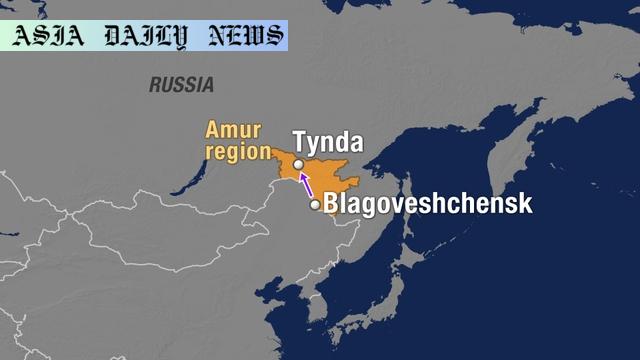Passenger plane carrying 49 people disappears from radar near Russia’s Far East.
Passenger plane carrying 49 people disappears from radar.
Antonov An-24 operated by Angara Airlines went missing.
Aircraft was traveling from Blagoveshchensk to Tynda.
A rescue operation has begun to locate the missing plane.

Passenger Plane Missing in Far East Russia
The disappearance of a passenger plane in Russia’s Far East has created a wave of concern and speculation. The plane, carrying 49 individuals, including crew, has reportedly vanished from radar. Operated by Angara Airlines, the Antonov An-24 was traveling from Blagoveshchensk, a major city in the Amur region, to the remote town of Tynda. Reports indicate that the disappearance was sudden, and its last radar signal was received shortly after departure.
Focused Rescue Operations Underway
According to reports shared by the Amur region’s governor, search and rescue teams have already been mobilized to locate the missing aircraft. Emergency services are working tirelessly, navigating the challenging terrain and adverse weather that may be hampering efforts. The region’s remote nature amplifies the complexities of the operation. Families of those aboard have gathered at airports in both cities, seeking updates on the search mission. Security personnel are ensuring they are given assistance and emotional support as updates unfold.
Understanding the Antonov An-24
The missing plane is identified as an Antonov An-24, a Soviet-era turboprop aircraft widely used in regional aviation. Known for its durability and ability to handle various terrains, the An-24 has been involved in several mishaps historically, leading some to question the safety records of the aging fleet. However, Angara Airlines, the operator, has assured the public of the plane’s airworthiness and has pledged to cooperate with authorities leading the investigation into its disappearance.
The Broader Implications
This tragic incident highlights ongoing challenges in aviation safety, particularly in remote regions where infrastructure and emergency response systems are less developed. As global aviation progresses with technological innovations and safety protocols, incidents like this serve as stark reminders of the complexities of flying in less accessible areas. Stakeholders, including local governments and airline regulators, must ensure that aging aircraft are either phased out or retrofitted with advanced safety measures. The Russian aviation industry has made strides, but incidents such as this underscore the importance of vigilance and transparency.
Unanswered Questions and Way Forward
The circumstances surrounding the disappearance are yet to be clarified. Was it due to mechanical failure, pilot error, adverse weather, or something else entirely? Authorities are expected to leave no stone unturned to uncover what transpired. In the interim, passengers’ safety in remote aviation routes continues to be a pressing concern. Governments and airline operators need to bolster efforts to enhance safety, ensuring that similar situations do not occur. Public safety and accountability are integral in restoring faith in regional airline services.



Commentary
A Reflection on Aviation Safety
The recent disappearance of the passenger plane in Russia’s Far East is an unsettling reminder of the risks associated with flying, particularly in remote and challenging regions. This tragic event holds profound implications for the aviation industry, not just in Russia but globally. It emphasizes the necessity for more robust safety mechanisms, better technology, and enhanced navigational systems.
Addressing Concerns Over Aging Fleet
The Antonov An-24, although lauded historically for its reliability, is a model that many in the aviation community have flagged for concerns due to its age. The incident raises difficult questions about the continued reliance on older aircraft in parts of the world where newer planes are less accessible. Exploring tighter regulations and stricter maintenance protocols may significantly minimize such tragedies in the future.
The Human Impact
Beyond the technical discussions is the harrowing experience of the families waiting for news about their loved ones. The emotional toll of these incidents cannot be overstated. While technical investigations are crucial, equally so is the need for transparency and support provided to those directly affected. Public agencies and operators must work collaboratively to address both immediate and long-term measures for victims’ families and passengers.
Future Considerations for Regional Aviation
Regional routes, especially in less accessible areas, require heightened vigilance. Whether it’s investment in newer aircraft, enhanced pilot training, or operational audits, all stakeholders must act comprehensively. While flying remains statistically safer than other travel modes, every brand and government must reaffirm their commitment to ensuring no compromises in safety measures.
While investigations continue, let this incident reignite a serious conversation about reforming global aviation security measures, particularly in underserved locales.